Of course these Pinoys are still living and are currently performing their own thing for the Glory of our Country. But have you ever thought of Filipinos, aside from the lists above, who are currently living beyond this earth and performing for eternity for the Greater Glory of God?
Well after digging deeper today in the Vatican archives and several Hagiography circle websites, I found an amazing find. Aside from the many foreign saints who stepped in our Land namely San Pedro Bautista, St. Francis Xavier, Mother Eugenia of the Assumption, San Ezekiel Moreno, and soon John Paull II and Blessed Antonio Barona of the UST Dominicans (who became the NCAA head from 1932-1933 and will be beatified this October 28 of 2007 in Rome), A handful of Pinoy saints were already canonized and some are waiting to be elevated to the sainthood. Read on and discover the rich heritage of Filipino Saints.
Canonized and Beatified
1. Lorenzo Ruiz
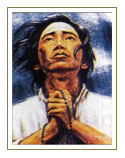 Lorenzo was born of a Chinese father and a Tagalog mother in Binondo between 1600 to 1610. He was a catechist of the Dominican friars and was soon sent with other Dominican missionaries in Japan. In July 10 1636 they were captured by the Emperorâ??s army in Nagasaki and was subjected to many horrible tortures like hanging them upside down in a well full of garbage, bloating their bodies with water only to press them with wood until they come out of their noses and ears, and putting needles under their nails and strumming them as if they were guitars strings. On February 1981 he was beatified by Pope John Paul II at the Rizal National Park. Seven Years later, he was proclaimed as the First Filipino Saint and Martyr in Rome.
Lorenzo was born of a Chinese father and a Tagalog mother in Binondo between 1600 to 1610. He was a catechist of the Dominican friars and was soon sent with other Dominican missionaries in Japan. In July 10 1636 they were captured by the Emperorâ??s army in Nagasaki and was subjected to many horrible tortures like hanging them upside down in a well full of garbage, bloating their bodies with water only to press them with wood until they come out of their noses and ears, and putting needles under their nails and strumming them as if they were guitars strings. On February 1981 he was beatified by Pope John Paul II at the Rizal National Park. Seven Years later, he was proclaimed as the First Filipino Saint and Martyr in Rome.
2. Pedro Calungsod
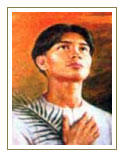 A young catechist who was taught by the Spanish Jesuit Blessed Diego Luis de San Vitores at a young age of 13 in the Visayas Islands. He was with the priest and several other young men when they went to Guam to teach Catechism. During that time, Western and Eastern Samar including the Marianas Islands are part of the Jurisdiction of the Archdiocese of Cebu. In this mission, Pedro Calungsod suffered Martyrdom while defending The Jesuit from the attack of two Natives who shot him in the chest with darts and a spear and then splitting his skull with a Machete. The Jesuit Priest died in the same way as Calungsod and their bodies were tied together in a pole and was thrown into the sea. Thus in 1672 at the age of 18, Calungsod was martyred for the faith. On March 5, 2000, Pope John Paul II beatified the first Filipino Youth and Visayan Saint, a month before he finally rested in Peace with the saints.
A young catechist who was taught by the Spanish Jesuit Blessed Diego Luis de San Vitores at a young age of 13 in the Visayas Islands. He was with the priest and several other young men when they went to Guam to teach Catechism. During that time, Western and Eastern Samar including the Marianas Islands are part of the Jurisdiction of the Archdiocese of Cebu. In this mission, Pedro Calungsod suffered Martyrdom while defending The Jesuit from the attack of two Natives who shot him in the chest with darts and a spear and then splitting his skull with a Machete. The Jesuit Priest died in the same way as Calungsod and their bodies were tied together in a pole and was thrown into the sea. Thus in 1672 at the age of 18, Calungsod was martyred for the faith. On March 5, 2000, Pope John Paul II beatified the first Filipino Youth and Visayan Saint, a month before he finally rested in Peace with the saints.
Pending Causes for Beatification
3. Filipino Youth Martyrs
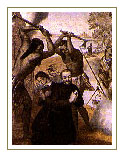 Aside from Pedro Calungsod, there were also his companions, a handful of Filipino young men who were unnamed in the expedition and suffered the same fate as them. The Jesuit priests, Blessed Diego Luis de San Vitores, starting a new mission in Guam, had taken 17 Filipinos, many of them teen-aged boys, as catechists, sacristans, bearers of mass-kits and provision-bags on mission journeys. The young men had been, in today’s language, “minor seminarians.” They had been taught Spanish and a little Latin; they were taught how to read and write. They learned the catechism by heart (they learned it by singing it through!). Many of these Young Filipino Catechist suffered the same faith as Pedro Calungsod who will remain unnamed in history but will be forever etched in the book of Glory.
Aside from Pedro Calungsod, there were also his companions, a handful of Filipino young men who were unnamed in the expedition and suffered the same fate as them. The Jesuit priests, Blessed Diego Luis de San Vitores, starting a new mission in Guam, had taken 17 Filipinos, many of them teen-aged boys, as catechists, sacristans, bearers of mass-kits and provision-bags on mission journeys. The young men had been, in today’s language, “minor seminarians.” They had been taught Spanish and a little Latin; they were taught how to read and write. They learned the catechism by heart (they learned it by singing it through!). Many of these Young Filipino Catechist suffered the same faith as Pedro Calungsod who will remain unnamed in history but will be forever etched in the book of Glory.
4. Francisca Fuentes (Francisca of the Holy Spirit)
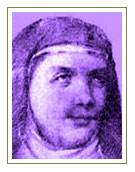 Born in 1647 in Manila by her parents Simon de Fuentes and Ana Maria Tamayo del Castillo. In 1672 she married young but later widowed without children. As a widow she involved herself in works of charity to the sick (San Juan de Dios Hospital), and to the poor inviting sometimes some pious women to join her in these spiritual endeavors. On 1696, Francisca established the Beaterio de Santa Catalina de Sena without prior permission from the Archbishop and was soon excommunicated. On Febraury 15, 1706 Archbishop Camacho issued a decree granting Mother Francisca and the Beatas the normal privileges within the life of enclosure under the rule of the Third Order. On August 24, 1711 Mother Francisca del Espiritu Santo died between 2:00 and 3:00 in the morning and was buried in the afternoon in the Church of Colegio de San Juan de Letran over the steps of the Main Altar on the side of the Gospel. She was the foundress of the Dominican Sisters of Saint Catherine of Siena here in the Philippines.
Born in 1647 in Manila by her parents Simon de Fuentes and Ana Maria Tamayo del Castillo. In 1672 she married young but later widowed without children. As a widow she involved herself in works of charity to the sick (San Juan de Dios Hospital), and to the poor inviting sometimes some pious women to join her in these spiritual endeavors. On 1696, Francisca established the Beaterio de Santa Catalina de Sena without prior permission from the Archbishop and was soon excommunicated. On Febraury 15, 1706 Archbishop Camacho issued a decree granting Mother Francisca and the Beatas the normal privileges within the life of enclosure under the rule of the Third Order. On August 24, 1711 Mother Francisca del Espiritu Santo died between 2:00 and 3:00 in the morning and was buried in the afternoon in the Church of Colegio de San Juan de Letran over the steps of the Main Altar on the side of the Gospel. She was the foundress of the Dominican Sisters of Saint Catherine of Siena here in the Philippines.
5. Martha de San Bernardo of Pampanga
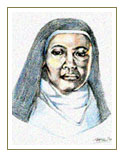 During the time of Martha, native Filipino women were not admitted to enter the convents. It was exclusive for white skinned Spanish women. Thus entered Martha de San Bernardo. Martha was not an ordinary native woman. She belonged to a wealthy family in Pampanga, was a ladina (native who could speak Spanish) and had a charismatic personality. “She was so influential woman and so moral and virtuous,” wrote a Franciscan chronicler, “that all the (Spanish nuns in the) convent urgently requested that she be conferred the novitiate habit. But because it was not legal at that time to confer a habit to an Indio (Native), her sisters together with the head of the Franciscan Order conspired to sent her to Macau so that she can be conferred with the habit outside the Jurisdiction of the Spanish Colony. And so sometime in October or November 1633, somewhere in the South China Sea between Manila and Macao, Martha de San Bernardo of Pampanga became the first Filipino nun in history.
During the time of Martha, native Filipino women were not admitted to enter the convents. It was exclusive for white skinned Spanish women. Thus entered Martha de San Bernardo. Martha was not an ordinary native woman. She belonged to a wealthy family in Pampanga, was a ladina (native who could speak Spanish) and had a charismatic personality. “She was so influential woman and so moral and virtuous,” wrote a Franciscan chronicler, “that all the (Spanish nuns in the) convent urgently requested that she be conferred the novitiate habit. But because it was not legal at that time to confer a habit to an Indio (Native), her sisters together with the head of the Franciscan Order conspired to sent her to Macau so that she can be conferred with the habit outside the Jurisdiction of the Spanish Colony. And so sometime in October or November 1633, somewhere in the South China Sea between Manila and Macao, Martha de San Bernardo of Pampanga became the first Filipino nun in history.
6. Maria Beatriz Del Rosario Arroyo (Maria Rosario of the Visitation)
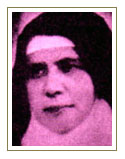 Maria Beatriz Arroyo was born in Molo, Iloilo City on February 17, 1884 to wealthy and pious parents, Don Ignacio Arroyo and Doña Maria Pidal. She joined religious life in the Beaterio de Sta. Catalina in Manila and made her profession on January 3, 1914. She founded the â??Beaterio del Santisimo Rosarioâ?? in Molo, Iloilo City, Philippines. Mother Rosario accompanied by two Dominican Sisters from Santa Catalina was the pioneer of this foundation. During the First General Chapter of January 3 â?? 6, 1953 she was elected the First Superioress General of the Congregation. â??Madre Sayong is known for her love for the poor, her strong faith in God and her simplicity in life,â?? said Sister Tolentino. â??Despite her wealth, she became a nun and dedicated herself to the service of the poor.â?? Sister Tolentino shared that during World War II, a number of people had prodded Madre Sayong to disband the congregation because the Japanese were threatening to kill them. But Madre Sayong refused, saying God will protect them. Not a single sister was harmed by the Japanese during the war. Madre Sayong died in the odor of sanctity on June 14, 1957 and was interred at the Molo cemetery the following day after serving the congregation for 32 years.
Maria Beatriz Arroyo was born in Molo, Iloilo City on February 17, 1884 to wealthy and pious parents, Don Ignacio Arroyo and Doña Maria Pidal. She joined religious life in the Beaterio de Sta. Catalina in Manila and made her profession on January 3, 1914. She founded the â??Beaterio del Santisimo Rosarioâ?? in Molo, Iloilo City, Philippines. Mother Rosario accompanied by two Dominican Sisters from Santa Catalina was the pioneer of this foundation. During the First General Chapter of January 3 â?? 6, 1953 she was elected the First Superioress General of the Congregation. â??Madre Sayong is known for her love for the poor, her strong faith in God and her simplicity in life,â?? said Sister Tolentino. â??Despite her wealth, she became a nun and dedicated herself to the service of the poor.â?? Sister Tolentino shared that during World War II, a number of people had prodded Madre Sayong to disband the congregation because the Japanese were threatening to kill them. But Madre Sayong refused, saying God will protect them. Not a single sister was harmed by the Japanese during the war. Madre Sayong died in the odor of sanctity on June 14, 1957 and was interred at the Molo cemetery the following day after serving the congregation for 32 years.
7. Isabel Larranaga Ramirez (Isabel of the Heart of Jesus)
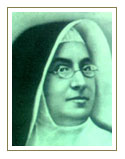 Isabel was not a full blooded Filipino but she was born in Manila (Philippines) on November 19, 1836 when the Philippines was still under Spanish rule. So technically, she is a Filipina by birth and virtue of citizenship. She was baptized in San Miguel de Arcangel in Malacanang 30 days after her birth. She was the daughter of Juan Andrés Ma. de Larrañaga (the Military Governor of Manila at that time) and Isabel Ramirez Patiño. On February 2, 1877, Isabel founded the Sisters of Charity of the Sacred Heart of Jesus which gives preference to the apostolate of the Christian education of children and youth. She died on January 17, 1899 in Havana Cuba and was later decreed as as a servant of God possessing heroic virtues by the Congregation for the Causes of saints on March 26, 1999.
Isabel was not a full blooded Filipino but she was born in Manila (Philippines) on November 19, 1836 when the Philippines was still under Spanish rule. So technically, she is a Filipina by birth and virtue of citizenship. She was baptized in San Miguel de Arcangel in Malacanang 30 days after her birth. She was the daughter of Juan Andrés Ma. de Larrañaga (the Military Governor of Manila at that time) and Isabel Ramirez Patiño. On February 2, 1877, Isabel founded the Sisters of Charity of the Sacred Heart of Jesus which gives preference to the apostolate of the Christian education of children and youth. She died on January 17, 1899 in Havana Cuba and was later decreed as as a servant of God possessing heroic virtues by the Congregation for the Causes of saints on March 26, 1999.
8. Dionisia De Santa Maria Mitas Talangpaz and
9. Cecilia Rosa De Jesus Talangpaz
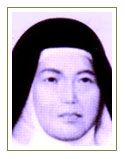
 Dionisia Mitas Talangpaz de Santa Maria and her younger sister, Cecilia Rossa Talangpaz de Jesus of Calumpit, Bulacan were half-Kapampangans. The Talangpaz sisters gave up the good life to stay in a humble nipa hut in Bilibid Viejo praying continuously and doing penance and needlework. After six years the Augustinian Recollect friars in the convent of the San Sebastian church invested them with the religious habit and gave them a small house in the convent’s garden. Other native women began applying to join the Talangpaz sisters and soon the house was converted into the Beaterio de San Sebastian de Calumpang. Cecilia and Dionisia Talangpaz died in 1731 and 1732, respectively, but the beaterio endured, surviving the British Occupation (1752-64), the Revolution (1896-1898) and the Philippine-American War (1899-1902), as well as the earthquakes of 1863 and 1880 and the Second World War (1941-1945). Today the beaterio is known as the Congregation of the Augustinian Recollect Sisters, the oldest non-contemplative religious community for women in the Augustinian Recollect Order throughout the world. It is credited for the establishment of the Colegio de Sta. Rita in Manila in 1907. In 1999, the cause for the Talangpaz sisters’ beatification was formally started.
Dionisia Mitas Talangpaz de Santa Maria and her younger sister, Cecilia Rossa Talangpaz de Jesus of Calumpit, Bulacan were half-Kapampangans. The Talangpaz sisters gave up the good life to stay in a humble nipa hut in Bilibid Viejo praying continuously and doing penance and needlework. After six years the Augustinian Recollect friars in the convent of the San Sebastian church invested them with the religious habit and gave them a small house in the convent’s garden. Other native women began applying to join the Talangpaz sisters and soon the house was converted into the Beaterio de San Sebastian de Calumpang. Cecilia and Dionisia Talangpaz died in 1731 and 1732, respectively, but the beaterio endured, surviving the British Occupation (1752-64), the Revolution (1896-1898) and the Philippine-American War (1899-1902), as well as the earthquakes of 1863 and 1880 and the Second World War (1941-1945). Today the beaterio is known as the Congregation of the Augustinian Recollect Sisters, the oldest non-contemplative religious community for women in the Augustinian Recollect Order throughout the world. It is credited for the establishment of the Colegio de Sta. Rita in Manila in 1907. In 1999, the cause for the Talangpaz sisters’ beatification was formally started.
10. Ignacia Del Espiritu Santo
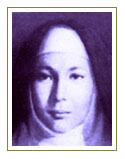 Mother Ignacia del Espiritu Santo was born in Manila, Philippines in 1663. She was the daughter of Jusepe Iuco, a Chinese immigrant from Amoy, China, and of Marà a Jerónima, a native Filipina. She refused her parents’ request to marry, instead Ignacia sought spiritual direction from a Jesuit. Her life of prayer and labor attracted Indias (natives) who also felt called to the religious life but could not be admitted into the existing congregation at that time. Mother Ignacia accepted these women into her company and the first community was born. They became known as the Beatas de la Compania de Jesus because they frequently received the sacraments at the Church of St.Ignatius. At the ripe age of 85, Ignacia died on her knees after receiving Holy Communion on September 10, 1748, and was interred at the Church of Saint Ignatius.
Mother Ignacia del Espiritu Santo was born in Manila, Philippines in 1663. She was the daughter of Jusepe Iuco, a Chinese immigrant from Amoy, China, and of Marà a Jerónima, a native Filipina. She refused her parents’ request to marry, instead Ignacia sought spiritual direction from a Jesuit. Her life of prayer and labor attracted Indias (natives) who also felt called to the religious life but could not be admitted into the existing congregation at that time. Mother Ignacia accepted these women into her company and the first community was born. They became known as the Beatas de la Compania de Jesus because they frequently received the sacraments at the Church of St.Ignatius. At the ripe age of 85, Ignacia died on her knees after receiving Holy Communion on September 10, 1748, and was interred at the Church of Saint Ignatius.
11. Alfredo Maria Obviar
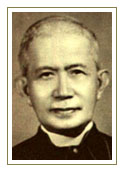 Bishop Obviar was born on August 29, 1889 in Lipa, Batangas (Philippines). He was an Auxilliary Bishop of the Archdioces of Lipa and was the Chaplain of Lipa Carmel. Bishop Obviar was one of the key personalities on the secrets of the Lipa Apparition. It was thru him that Teresing (the visionary) and the Prioress sought their guidance. It was also said that Bishop Obviar, asking a sign from heaven if the apparition was true, experienced the shower of petals at his feet as he walked towards the Chapel. He was silenced the by the Papal Nuncio regarding this matter along with the other key personalities of the apparition like Archbishop Alfredo Versoza and was assigned to the Diocese of Lucena as the Bishop. There he founded the Missionary Cathechist of St. Therese in which was also one of the saints who accompanied the Virgin Mary during the Apparition. He died on October 1, 1978, the Feast of St. Therese of Liseux, the same saint in which he named after the congregation he founded. The body of Bishop Obviar lies on the Mother House of the Congregation in Tayabas Quezon and is doing a record breaking number of miracles thru his intercession.
Bishop Obviar was born on August 29, 1889 in Lipa, Batangas (Philippines). He was an Auxilliary Bishop of the Archdioces of Lipa and was the Chaplain of Lipa Carmel. Bishop Obviar was one of the key personalities on the secrets of the Lipa Apparition. It was thru him that Teresing (the visionary) and the Prioress sought their guidance. It was also said that Bishop Obviar, asking a sign from heaven if the apparition was true, experienced the shower of petals at his feet as he walked towards the Chapel. He was silenced the by the Papal Nuncio regarding this matter along with the other key personalities of the apparition like Archbishop Alfredo Versoza and was assigned to the Diocese of Lucena as the Bishop. There he founded the Missionary Cathechist of St. Therese in which was also one of the saints who accompanied the Virgin Mary during the Apparition. He died on October 1, 1978, the Feast of St. Therese of Liseux, the same saint in which he named after the congregation he founded. The body of Bishop Obviar lies on the Mother House of the Congregation in Tayabas Quezon and is doing a record breaking number of miracles thru his intercession.
12. Madalena de la Concepcion
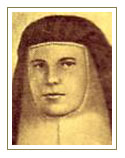 Because she was a living saint during her time, Like Sor Martha de San Bernardo before her, Madalena de la Concepcion was a noblewoman from Pampanga but unlike Sor Martha, she was admitted to the monastery of the Poor Clares without a hitch. She received their habit on February 9, 1636 and professed the vows of poverty, chastity and obedience the following year. Sor Madalenaâ??s biographer wrote that as a nun, she persevered for 49 years in such an exemplary way and in the strict observance of the Rule; in all those years, no deficiency whatsoever was noted in her compliance with the policies of the convent, ever excelling with diligence in the performance of the most humble and difficult tasks in the community and always abhorring positions of honor. With this example of humility and regular observance, she persevered until her death on April 5, 1685.
Because she was a living saint during her time, Like Sor Martha de San Bernardo before her, Madalena de la Concepcion was a noblewoman from Pampanga but unlike Sor Martha, she was admitted to the monastery of the Poor Clares without a hitch. She received their habit on February 9, 1636 and professed the vows of poverty, chastity and obedience the following year. Sor Madalenaâ??s biographer wrote that as a nun, she persevered for 49 years in such an exemplary way and in the strict observance of the Rule; in all those years, no deficiency whatsoever was noted in her compliance with the policies of the convent, ever excelling with diligence in the performance of the most humble and difficult tasks in the community and always abhorring positions of honor. With this example of humility and regular observance, she persevered until her death on April 5, 1685.
13. Juan de Guerra
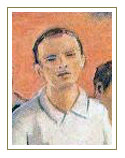 Because he was the second Filipino martyr, after Saint Lorenzo Ruiz, thirty-year-old Juan de Guerra, a Kapampangan seaman from Betis, was in the wrong place at the wrong time that day in Macao in 1640, when the Portuguese city sent an all-layman delegation to Japan to improve diplomatic relations. He was one of two Filipinos among the 70 crewmen accompanying four Macao diplomats; no friar was allowed on the trip to show the anti-Christian Japanese officials that they had no covert mission to evangelize. (Japan had recently outlawed Christianity in the empire, executing Japanese Christians as well as foreigners who had come to re-introduce the religion. One of those killed three years earlier was Lorenzo Ruiz of Manila.) As soon as the delegation reached Japan, they were thrown in jail on charges of conspiracy to propagate the outlawed religion. Sixty-one, including Juan de Guerra, were beheaded while 13 were sent back to Macao. It is the detailed eyewitness account of these 13 survivors that served as basis for a 1698 book on the martyrdom by Fray Joseph Sicardo of Madrid, and will serve as evidence in possible beatification and canonization of the martyrs in the future. News of Juan de Guerra's and his Filipino companionsâ martyrdom was greeted with great ecclesiastical celebration in Manila.
Because he was the second Filipino martyr, after Saint Lorenzo Ruiz, thirty-year-old Juan de Guerra, a Kapampangan seaman from Betis, was in the wrong place at the wrong time that day in Macao in 1640, when the Portuguese city sent an all-layman delegation to Japan to improve diplomatic relations. He was one of two Filipinos among the 70 crewmen accompanying four Macao diplomats; no friar was allowed on the trip to show the anti-Christian Japanese officials that they had no covert mission to evangelize. (Japan had recently outlawed Christianity in the empire, executing Japanese Christians as well as foreigners who had come to re-introduce the religion. One of those killed three years earlier was Lorenzo Ruiz of Manila.) As soon as the delegation reached Japan, they were thrown in jail on charges of conspiracy to propagate the outlawed religion. Sixty-one, including Juan de Guerra, were beheaded while 13 were sent back to Macao. It is the detailed eyewitness account of these 13 survivors that served as basis for a 1698 book on the martyrdom by Fray Joseph Sicardo of Madrid, and will serve as evidence in possible beatification and canonization of the martyrs in the future. News of Juan de Guerra's and his Filipino companionsâ martyrdom was greeted with great ecclesiastical celebration in Manila.
14. Nicolas de Figueroa
 o celBecause he suffered a gruesome death one day ahead of Blessed Pedro Calungsod s martyrdom Nicolas de Figueroa of Bacolor was also one of the four Kapampangans in the mission to the Ladrones Islands in 1668. Like Pedro Calungsod and Andres de la Cruz, he was a boyish catechist who was eager to baptize the babies and children of the islanders. On April 1, 1672, while searching for a Mexican fellow missionary who turned out to have been murdered, Nicolas and three companions were ambushed by 20 ferocious islanders. Though outnumbered, Nicolasâ?? group put up a fight; Nicolas and his two surviving companions fled in separate directions; he ended up in a village where he was welcomed and then suddenly seized by an islander, dragged to the cliff and thrown off the edge. Below other islanders mercilessly attacked him with lances. The following morning, it was San Vitores and Calungsodâ??s turn to be executed. Later on the same day, one of the survivors in Nicolasâ?? group took refuge in the same village and suffered the same fate as Nicolas while the last companion lived to tell their story to a tribunal which conducted the first beatification inquiry in Guam in 1673. News of their deaths reached Manila on May 3, 1672; church bells rang all over and congregations sang Te Deum to celebrate their martyrdom
o celBecause he suffered a gruesome death one day ahead of Blessed Pedro Calungsod s martyrdom Nicolas de Figueroa of Bacolor was also one of the four Kapampangans in the mission to the Ladrones Islands in 1668. Like Pedro Calungsod and Andres de la Cruz, he was a boyish catechist who was eager to baptize the babies and children of the islanders. On April 1, 1672, while searching for a Mexican fellow missionary who turned out to have been murdered, Nicolas and three companions were ambushed by 20 ferocious islanders. Though outnumbered, Nicolasâ?? group put up a fight; Nicolas and his two surviving companions fled in separate directions; he ended up in a village where he was welcomed and then suddenly seized by an islander, dragged to the cliff and thrown off the edge. Below other islanders mercilessly attacked him with lances. The following morning, it was San Vitores and Calungsodâ??s turn to be executed. Later on the same day, one of the survivors in Nicolasâ?? group took refuge in the same village and suffered the same fate as Nicolas while the last companion lived to tell their story to a tribunal which conducted the first beatification inquiry in Guam in 1673. News of their deaths reached Manila on May 3, 1672; church bells rang all over and congregations sang Te Deum to celebrate their martyrdom
15. Hermana Fausta Labrador
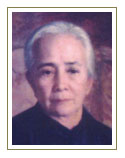 She was a native of Tayabas, Quezon. Born on December 15, 1858 from a wealthy parents named Policarpio Labrador and Nemesia Zarzadias. She spent her life doing good in fulfillment of the Gospel of Christ. An ordinary lay person who lived in Lucena, she never joined a religious congregation nor did she get married. With the assistance of volunteers and relying solely on Godâ??s providence, she ran a school for 53 years and, approaching the age of 80, turned it over to the Congregation of the Daughters of Charity. The school is Sacred Heart College, one of the outstanding private schools in the Philippines. However, Hermana Fausta was not known as an educator but simply as a woman of great compassion for the poor and as a radiant example of a life of prayer and zeal for souls. She had an outstanding devotion to the Holy Eucharist, to the Mass and to the Holy Rosary. On September 13, 1942 Hermana Uta died at the age of nearly 84. Her Beatification proceedings for her cause are now undertaken by the Diocese of Lucena with the full support of the Daughters of Charity and Sacred Heart College.
She was a native of Tayabas, Quezon. Born on December 15, 1858 from a wealthy parents named Policarpio Labrador and Nemesia Zarzadias. She spent her life doing good in fulfillment of the Gospel of Christ. An ordinary lay person who lived in Lucena, she never joined a religious congregation nor did she get married. With the assistance of volunteers and relying solely on Godâ??s providence, she ran a school for 53 years and, approaching the age of 80, turned it over to the Congregation of the Daughters of Charity. The school is Sacred Heart College, one of the outstanding private schools in the Philippines. However, Hermana Fausta was not known as an educator but simply as a woman of great compassion for the poor and as a radiant example of a life of prayer and zeal for souls. She had an outstanding devotion to the Holy Eucharist, to the Mass and to the Holy Rosary. On September 13, 1942 Hermana Uta died at the age of nearly 84. Her Beatification proceedings for her cause are now undertaken by the Diocese of Lucena with the full support of the Daughters of Charity and Sacred Heart College.
